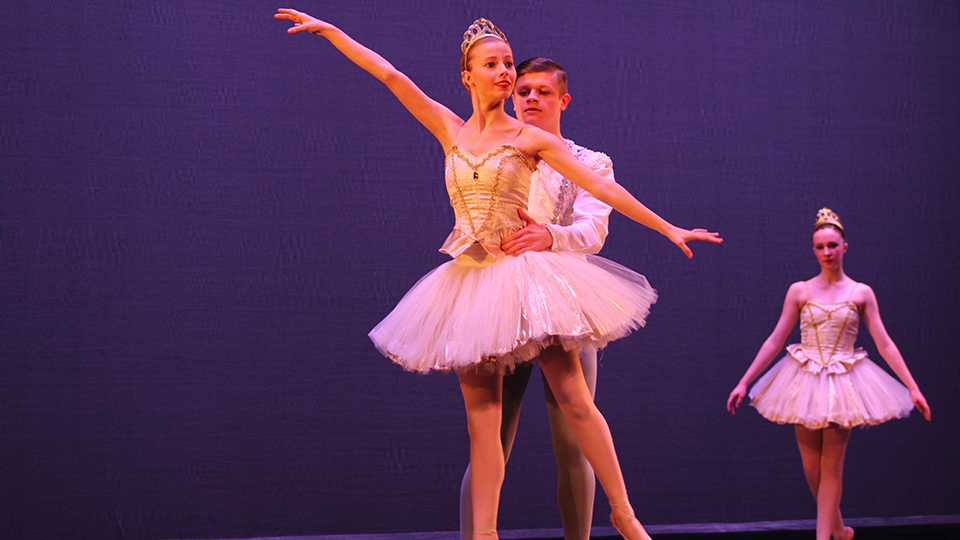A&E
Themes of trauma, harmony and liberation in dance concert
By Ghada Emish ’19
March 10, 2016
Dance and Movement Studies launched its Spring Dance Concert last Friday. The concert featured a variety of performances, from ballet to martial to arts to dance therapy, that appealed to all crowds.
Chuyun Oh, Visiting Assistant Professor of East Asian Languages and Literature, gave a brilliant performance that uses dance to overcome traumatic experiences. Oh reflects on dance as a way to “use our bodies to tell stories that otherwise remain traumatic and to speak unspeakable things.” In her opinion, dance is a practice that transforms “silent victims to survivors of violence.” Oh danced to Korean artist Lee-Tzsche’s mysterious song “GongMuDoHaGa.” At the end of her dance, Oh saluted the audience with a farewell gesture. Oh’s performance was a courageous one that urges people to deal with their traumatic experiences sincerely and energetically.
“Just in Case,” choreographed by Professor of Dance Bruce Walczyk, was a performance that aimed at showing how “harmony can result from violent conflict,” referring to the harmony that was born between American and German people during WWII. The idea behind the performance is innovative and represented an impression of confusion that is inseparable from war. However, more co-ordination in the dance movements would have further improved the show’s ability to touch people and present its core idea with no distraction.
Dance proved to be a flexible medium for expressing oneself in “moksa/Liberation,” which used somewhat restricted movements to tell a heartrending story. The piece was choreographed by Lecturer in Dance Sandra Stanton-Cotton. The two performers, Hannah Cook ’16 and Kenzie Nguyen ’17, wore masks and were tied with ropes on two opposite sides of the stage with enough distance between the two dancers that they could not reach one another. The scene opened with the two dancers lying motionless on the floor. One tried to reach the other by energetically moving her body while she was on the floor, but she kept failing because the rope is not long enough, highlighting the dramatic separation of the two dancers. Soon, the second dancer also struggled to reach her partner. Viewers followed the delicate movements of Cook’s and Nguyen’s physical struggle against the floor and the rope with the music falling inseparably from the pace of the dancers’ movements, making the separation feel unbearable. Eventually, the dancers started moving in the sphere their ropes allowed, making the best of the space they had. Finally, eventually, the dancers dropped the masks and freed themselves from the ropes to meet in jubilation; however, a third masked dancer appeared on the stage attached to a rope. Only after using the limited space they had were the dancers able to shatter their confinement.
The story in “moksa/Liberation” could be interpreted as an insightful expression of women’s diminished ability to sincerely communicate with one another due to the conceptual pressures society imposes on them. Till this moment in the 21st century, society restricts women to dressing and grooming in a certain way and to commit to the values of family regardless of their goals in life, attitudes that have hindered women’s progress throughout the ages and blocked their active presence in society. These dogmas drive some women to be biased against one another for either applying such principles or dissenting from them. It is interesting that the ropes and masks in “moksa/Liberation” are dropped at the same time, indicating that they both acted as deterrents from the effective communication of the two dancers. The ropes and masks are metaphorical elements of the conceptual pressures that hinder women’s ability to reach out to one another, indicating women’s continuous desire, one that they might not necessarily be aware of, to communicate regardless of their differences because they do share a lot psychologically. However, women feel there is little need to communicate with other women who hold different views because, to some extent, they do not realize the positive effect communication could have on them by expanding their perspectives and lessening the vulnerability to psychological disorders. The dance style in “moska/Liberations” was unforgettable and thought-provoking; the piece was certainly a lot more than an entertaining performance.





